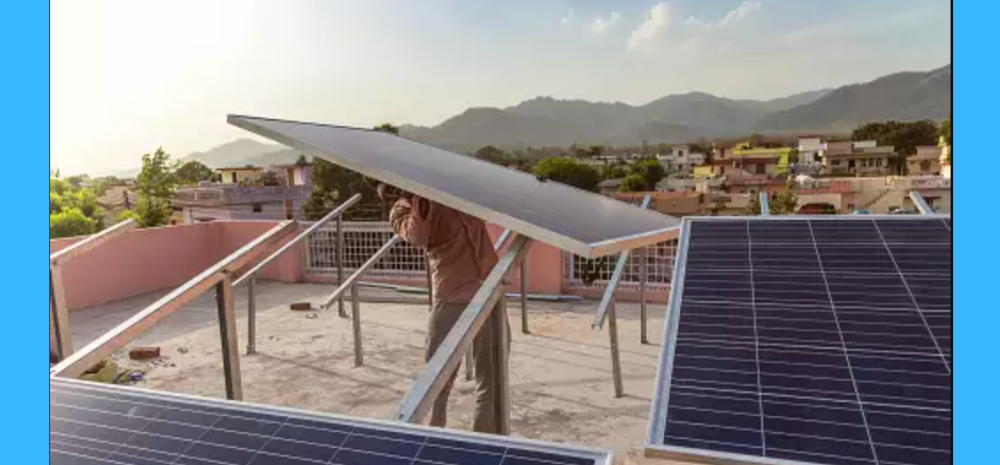The union budget 2023 presented a new flagship rooftop solar scheme called Pradhanmantri Suryoday Yojna targeting 10 million beneficiaries through increased subsidies, easier financing and surplus solar energy monetization incentives.

Households meeting eligibility norms can avail free electricity up to 300 units monthly alongside earning additional revenues selling excess generation to grids through net metering. This intends bridging persisting adoption gaps plaguing past national programs.
60 Lakh Annual Savings Per Home
Citing budget documents, Finance Minister Nirmala Sitharaman stated enrolled homes could pocket annual savings between Rs 15,000-18,000 through slashed bills and exports sale. This factors power costs inflation alongside persuasive economics given falling solar infrastructure costs.
Central PSUs will drive rapid proliferation through state-level channels supported by budget outlays and over $15 billion in dedicated financing from lenders like REC. Past schemes struggled with under 15% achievement versus targets.
Beefed Up Incentives to Spur Household Adoption
Existing offerings also boosted returns for citizens by hiking CFA subsidies beyond ₹10,000 per household recently. But more aggressive hand-holding is vital to spur adoption by budget home segments facing upfront investment barriers or unawareness around net gains.
The latest model balances carrots like giveaways for users with sticks for distribution companies mandated procuring certain renewable mix. Their pooled financing at scale can enable competitive, standardized installation costs within mass reach.
Ensuring Grid Integration for Green Mission
By proactively integrating distribution firms into rooftop solar expansion having remained slow-paced so far, the government also addresses previous disconnects that prevented optimization of household generation capacities with grid capacities.
The intended nationally aggregated impact remains powering the equivalent of several ultra mega solar parks cutting reliance on imported fossil fuels – in line with India’s ambitious 2030 emissions reduction commitments.













